Dragonflies and damselflies are some of our most beautiful and intriguing insects
Peterborough Examiner – July 14, 2023 – by Drew Monkman
Working in the garden one evening this week, I was spending as much time swatting mosquitoes as tending to the plants. I then noticed several dragonflies darting back and forth above my head. This reminded me that nature has its own mosquito control system – ancient flying machines that love nothing more than dining on these blood-sucking nuisances.
Dragonflies and their closely-related cousins, the damselflies, intrigue us all. Known collectively as odonates (from the insect order Odonata), they have evocative names like ebony jewelwing, Stygian shadowdragon and racket-tailed emerald. When we look into their huge eyes, we are seeing life as it existed millions of years ago. Odonates are as old as the first reptiles and far older than the first flowering plants. Their basic structure has hardly changed in all this time. Clearly, evolution mastered odonate design a long time ago.
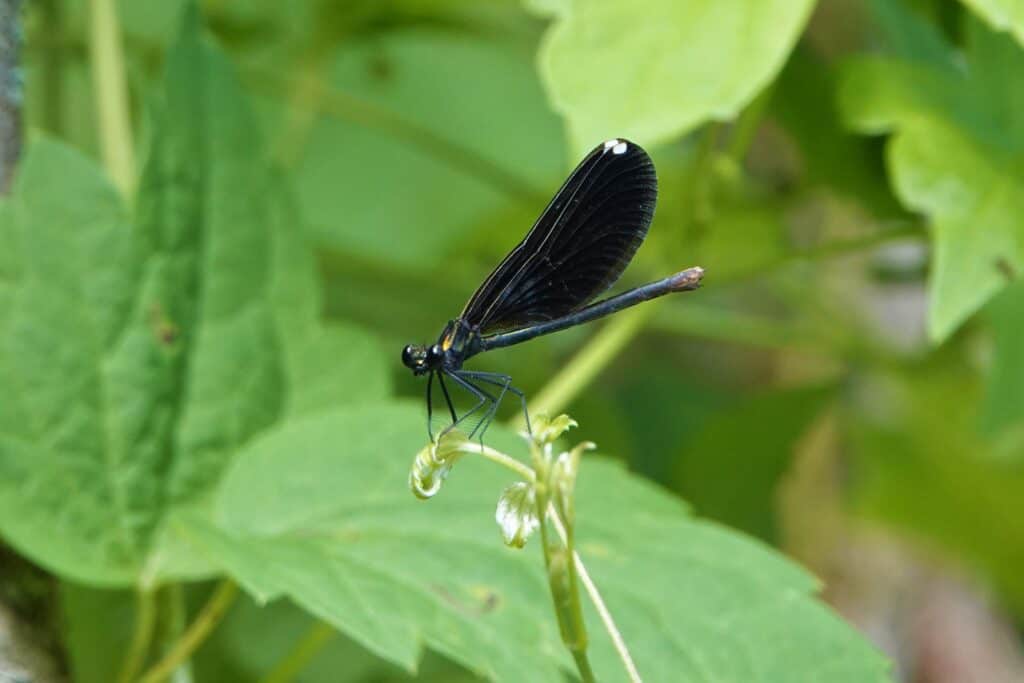
Dragonflies and damselflies are easy to tell apart. Damselflies tend to be small – often only an inch or so in length – with a thin body. They are weak, tentative fliers and hold their wings closed or only partially spread when at rest. Dragonflies, on the other hand, are much larger with thick bodies. They are strong fliers and keep their wings completely open when resting.
Odonates of the Kawarthas
Our knowledge of the dragonflies and damselflies of the Kawarthas dates to only 1993 when a small group of local naturalists began keeping detailed records of their sightings. Now, over 100 species have been recorded in Peterborough County alone, approximately one-third of which are damselflies.
Although odonates are usually found around water – marshes, in particular – they also frequent fields, roadsides and gardens. All our local rail-trails provide great odonate-watching (also known as “oding”) opportunities, especially in sections that pass through wetlands. Watching from a kayak or canoe can be especially fun and productive.
Like butterflies, different species fly at different times of the year. In July, some of the most common and easy-to-identify dragonflies are the “skimmers”, a group characterized by prominent wing patches and body markings. They include the chalk-fronted, twelve-spotted and widow skimmers. Darners, too, are easy to find. The male common green darner is especially beautiful with its bright green thorax and blue abdomen. By late summer, smaller dragonflies called meadowhawks become abundant. In most species, the males are red, while the females and immatures are yellow.
As for damselflies, now is a good time to see ebony jewelwings, a species that often turns up in gardens. They are quite large and, in the proper light, radiate a beautiful metallic green lustre. Other common damselflies on the wing right now include spreadwings, forktails and bluets. The latter are tiny, powder blue damselflies, which are often seen on marsh vegetation and around docks.
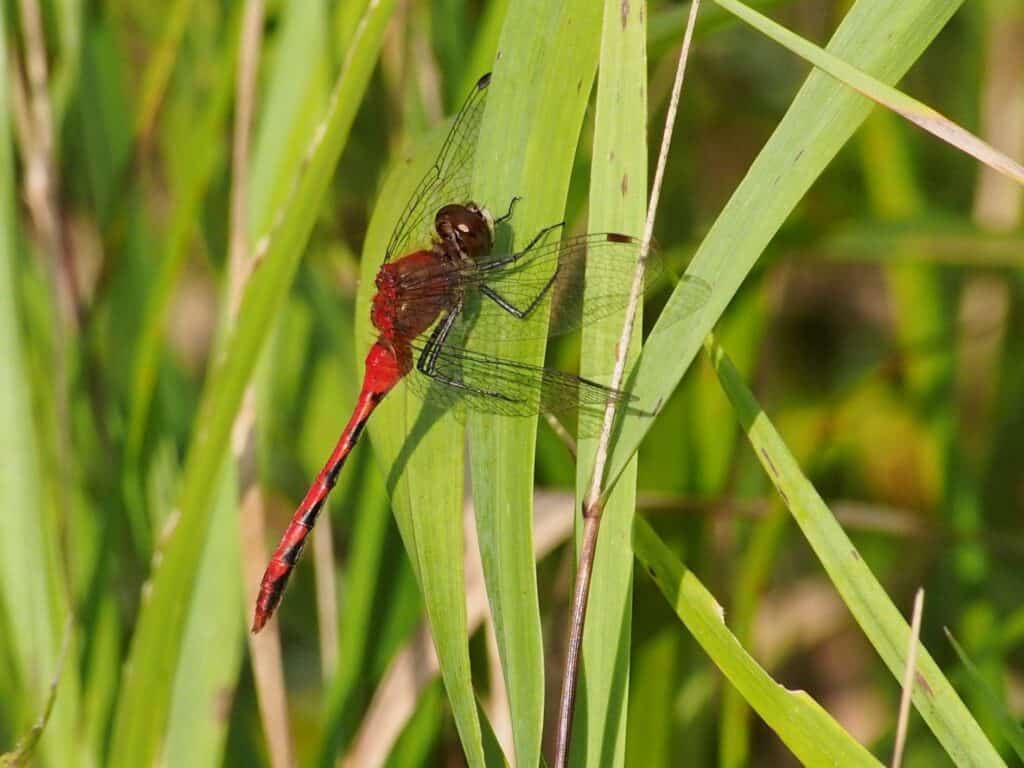
Interesting behaviours
Odonates attract our attention in many different ways. For example, large numbers of the same species often emerge at the same time. Black and white chalk-fronted skimmers are typical in this regard. In early summer, hundreds often congregate along cottage roads. Later in the season, you’ll often see swarms of dragonflies feeding on flying ants.
The rough-and-tumble world of odonate sex is especially fascinating. The male forms a tandem with the female by literally grabbing her behind the head with claspers which are located at the tip of his abdomen. The pair then alights and goes into the “wheel” position. To do so, the female bends the tip of her abdomen around until her genitalia are brought into contact with the male’s penis. In this way, the couple forms a closed circle with their bodies. Now, things get even more interesting. The male will use special “scoopers” to clear out any sperm that a previous male may have deposited in the female. This helps to assure that only his genes will be transferred to future generations. Having cleaned house, he injects his sperm into the female, and the wheel is broken.
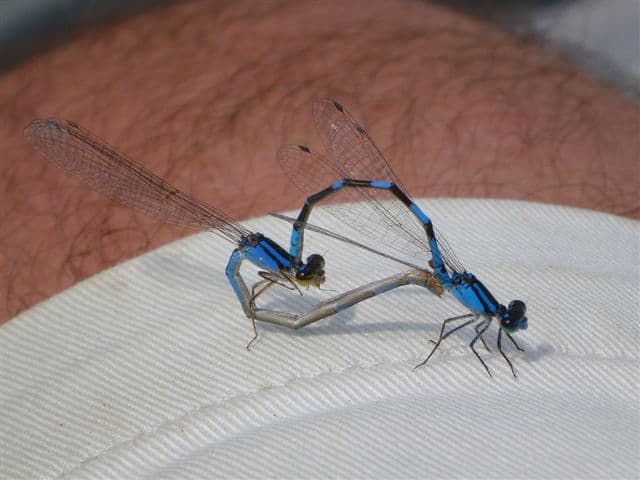
Photography
Odonates are among the most photogenic of our insects. Many species also have the cooperative habit of returning to the same perch time and time again. You can therefore pre-focus on the perch and wait for the dragonfly or damselfly to land. All that’s required is some patience.
Try to take advantage of the softer, diffused light of cloudy days when odonates are less active and easier to approach. For species like darners that don’t often land, you can sometimes find them perched during the cool temperatures of early morning before their flight muscles warm up. You might even find a few covered in dew. Always focus on the eyes and take shots from different angles such as from the side. Whenever possible, look for a background that provides contrast.
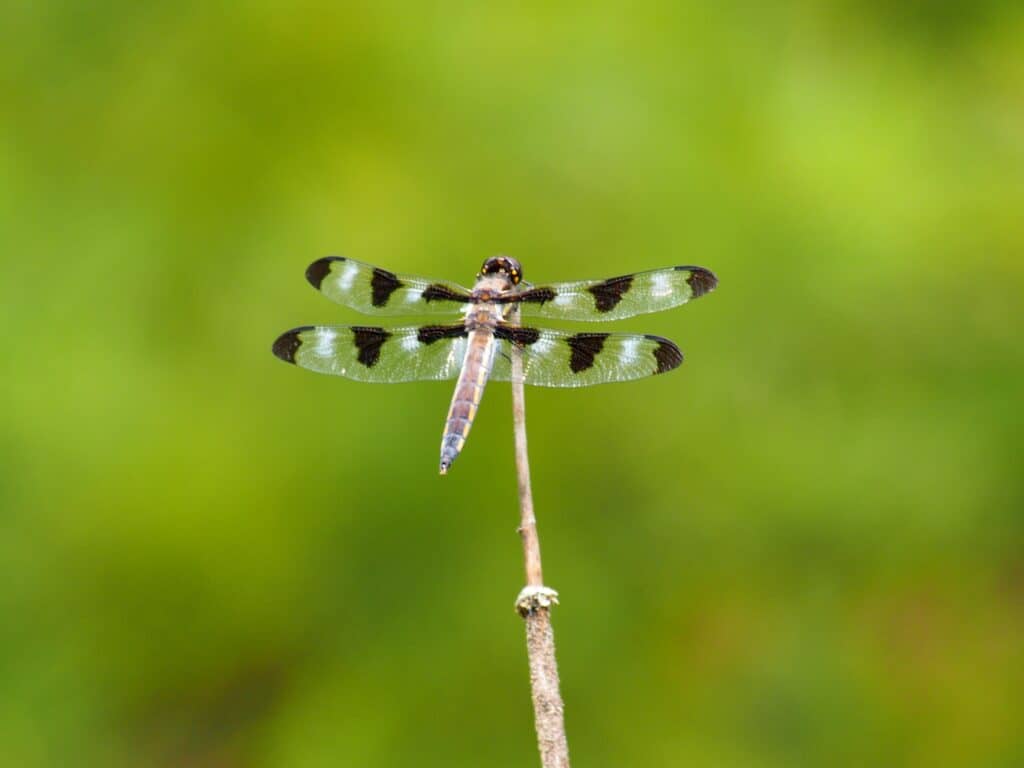
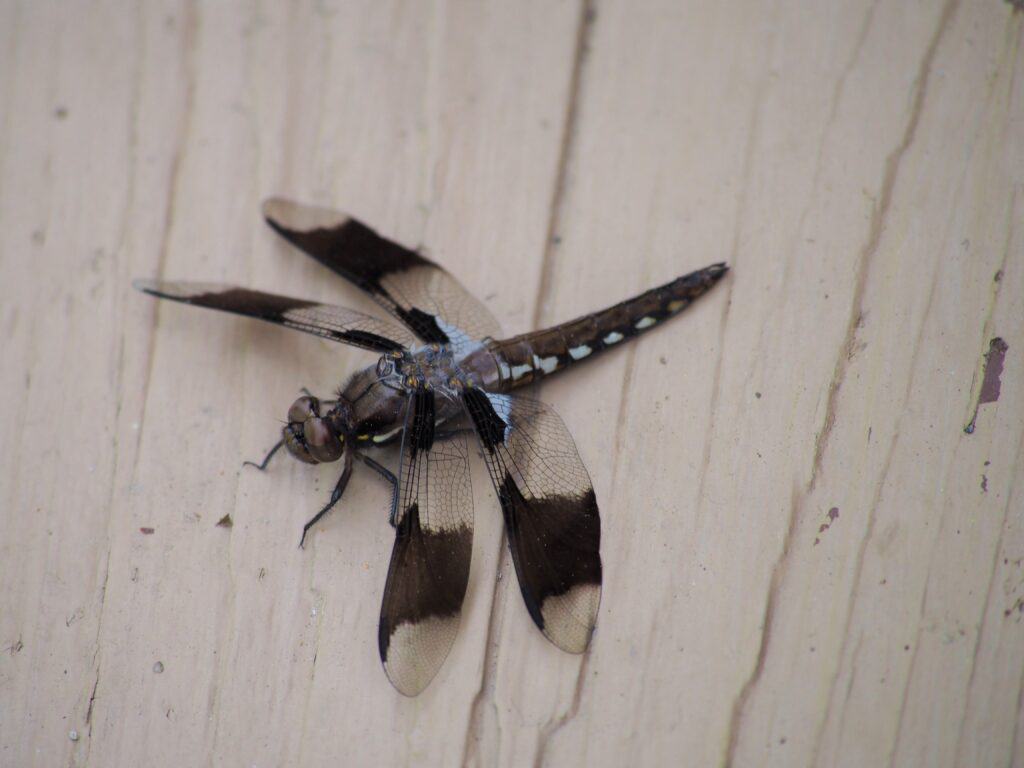
Viewing and identifying
Photos are also useful for identification purposes, either with a field guide or by using the free iNaturalist app. When I can’t get a good photo with my phone, I take a picture with my camera, bring the image up on the camera’s screen, and then photograph the screen with my phone. The iNaturalist app can then access the photo and magically identify the species.
You don’t have to take pictures, however, to identify odonates. Many species allow close up looks and can be identified with the naked eye. For the more skittish varieties, however, a pair of close-focusing binoculars is a must.
I recommend purchasing an odonate guide like the “Field Guide to the Dragonflies and Damselflies of Algonquin Provincial Park and the Surrounding Area”. The main author is Colin Jones, a local naturalist and biologist. The beautiful illustrations are by Peterborough native, Peter Burke. It’s an excellent resource and includes all the species found in the Kawarthas.
Using a field guide as a reference, spend some time learning the key field marks and behaviours of each of the three families of damselflies and six families of dragonflies. For example, are the eyes separated or connected? Are the wings clear or patterned? Does it fly high or low? Does it perch often and, if so, how and where? Remember, too, that the males and females of some species can look quite different, as can some of the immatures.
To see recent local odonate sightings in our area, go to https://www.inaturalist.org/ and click on Explore. Enter Peterborough ON in the Location box. When the map comes up, enter the species name (e.g., Canada Darner) in the Species box. Click on the orange dots to see the exact location, the date and a photo.
As with birding, odonate-watching can become addictive. You’ll find yourself enamoured by their sheer beauty and excited to find new species. Odonates are yet another window onto the amazing biodiversity of the Kawarthas.
Note: An earlier version of this column appeared on July 16, 2019.
Climate Chaos Update
Alarm: As Canada burns, birds are among the forgotten victims. The fires this year have struck in the nesting season for many species. Inevitably, many eggs and nestlings are succumbing to the flames. Some birds may try nesting again elsewhere but this is a huge challenge in an unfamiliar area. For many species it’s already too late in the nesting season to even try. Concern is especially high for endangered whooping cranes that nest in Alberta’s Wood Buffalo National Park. More wildfires here could decimate their fragile population. The extent to which smoke affects birds’ health isn’t as well understood. Bird lungs pull in roughly twice as much oxygen as human lungs, which may make them more susceptible to air pollution. The only relatively good news is that boreal birds (with the exception of whooping cranes) tend to have wide ranges, so the fires are unlikely to push these species toward extinction.
Carbon dioxide: The atmospheric CO2 reading for the week ending July 8 was 422.61 parts per million (ppm), compared to 419.96 ppm a year ago. Rising CO2 means more climate chaos and increasingly severe storms, droughts, wildfires and choking smoke ahead.